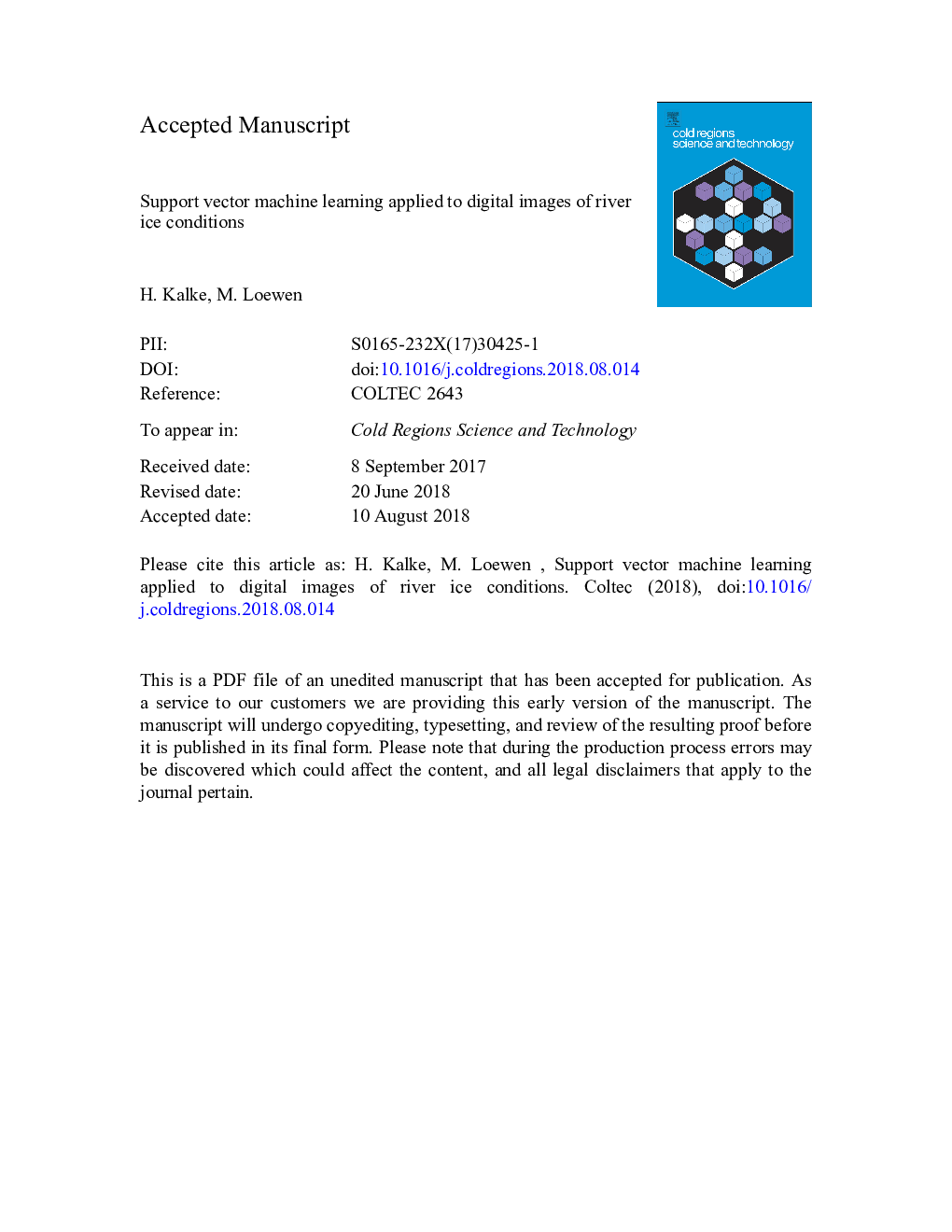| کد مقاله | کد نشریه | سال انتشار | مقاله انگلیسی | نسخه تمام متن |
|---|---|---|---|---|
| 8906362 | 1634409 | 2018 | 48 صفحه PDF | دانلود رایگان |
عنوان انگلیسی مقاله ISI
Support vector machine learning applied to digital images of river ice conditions
ترجمه فارسی عنوان
یادگیری بردار ماشین پشتیبانی برای تصاویر دیجیتال از شرایط یخ رودخانه استفاده می شود
دانلود مقاله + سفارش ترجمه
دانلود مقاله ISI انگلیسی
رایگان برای ایرانیان
موضوعات مرتبط
مهندسی و علوم پایه
علوم زمین و سیارات
علوم زمین و سیاره ای (عمومی)
چکیده انگلیسی
In this study the use of support vector machines (SVM), a popular type of machine learning algorithm, for monitoring river ice properties during freeze-up was investigated. The goal was to develop an automated image processing method that could be used to accurately compute the total surface ice concentration and also discriminate between frazil and released floating anchor ice pans. Total surface ice concentration has previously been computed from digital images of surface ice conditions using the most common image segmentation method, thresholding. However, thresholding techniques often produce inaccurate results or if performed manually can be highly subjective and labour intensive. Three site specific SVM models were trained in this study to accurately distinguish between surface ice and water, and produce binary images from which the total surface ice concentration could be computed. The digital images of river ice conditions were acquired using bridge-mounted game cameras and an unmanned aerial vehicle on two Alberta rivers. The total surface ice concentrations computed from the SVM generated binary images were significantly more accurate than concentrations computed using four thresholding methods. The trained SVM models were then used to compute spatial distributions of surface ice concentration across the two rivers from the UAV images. In addition, time-series of surface ice concentrations during freeze-up were also computed from the bridge-mounted game camera images. Site specific SVM models for estimating surface ice concentration were shown to be a feasible and accurate tool for river ice monitoring that could potentially aid in the validation of numerical models and improve understanding of river freeze-up processes. An SVM to separate total surface ice into frazil and anchor ice components was also trained and validated. This model produced mixed results when tested on images from two anchor ice release events and additional research is needed to more fully assess its potential.
ناشر
Database: Elsevier - ScienceDirect (ساینس دایرکت)
Journal: Cold Regions Science and Technology - Volume 155, November 2018, Pages 225-236
Journal: Cold Regions Science and Technology - Volume 155, November 2018, Pages 225-236
نویسندگان
H. Kalke, M. Loewen,
